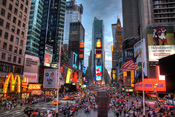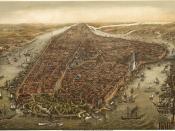During the last 30 years, with the advancement of newer routes and thus ease of transportation residential patterns have shifted more and more from the inner city to the outer city, in order to accommodate the demand for larger square footage desired by the average person. While population has grown at a slightly steady rate, the number of households has grown and the number of people living in each household has decreased, (table 1.1) this suggests the city has grown, not only population wise on the outskirts, but the amount of households on those outskirts and logically the outskirt's extension outward. This trend for the outward movement from the central area of the city, is reserved for only a selection proportion of the population, i.e. middle and upper classes, and thus the inner city has becoming an increasing poorer area. This in it of itself has further effected the pattern of leaving the inner city, a process often dunned 'white flight'.
Whereby, the remaining middle and upper classes leave the now poorer areas because of the increase of problems associated with them ( i.e. crime rate, deterioration, and decreasing price of real estate).
Employment patterns have followed suit, with a great deal of the population now located in the suburbs, jobs have also begun to move out into them. To provide better access to their employees, and indeed be in better neighborhoods themselves (fig 1.4). While this pattern could be seen as being in favor of suburban community, it greatly deprives the community that remains within the inner cities. The job market having moved there are fewer opportunities for the poor and thus, they now find they must commute to the suburbs during the day. Their commute is more complicated than that of the upper classes, because the number of vehicles per household is smaller (table 1.1), and thus the inner city residents rely on public transportation and car pooling.
Hanson, Susan (ed.). 1995. The Geography of Urban Transportation. New York, New York: The Guilford Press





